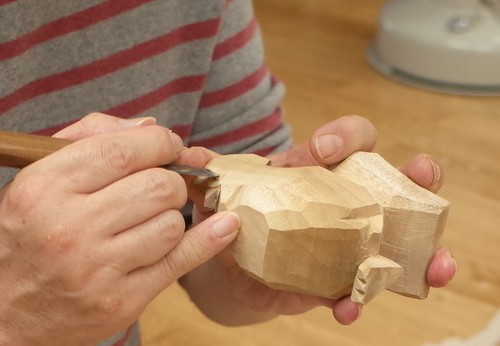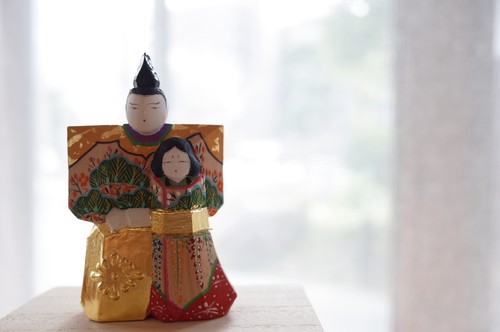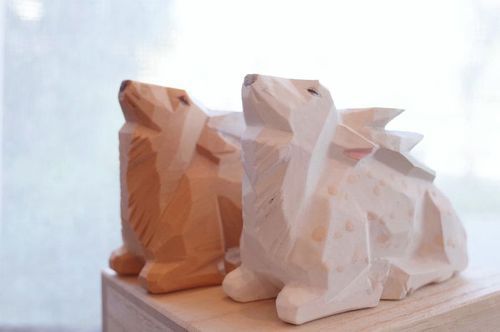Nara Itto-bori, wood carving
Itto-bori wood carving is a traditional craftwork
fostered in Nara' s natural environment and culture.
Itto- bori is also called Nara doll.
It features dynamic carving and fine colour finish applied on hinoki cypress,
camphor tree and Katsura tree (Cinnamomum cassia)

Carved wood texture expresses beautiful movement, leaving a warm touch.
The vivid colours with natural paints and gold leaves,
that is affected by noh clothing, remain us elegant noble culture.
The origin of Itto-bori carving is a doll to decorate a Nara's religious festival,
Kasuga wakamiya maturi around the end of Heian period.
It was originally made in simple shapes for the Shinto rituals,
so as to minimise contact with people's hands, although it had richly coloured decoration,
that is one of important features of Itto-bori.
In the Edo period, we started to have a wide range of Itto-bori doll images,
including Nohgaku, traditional Japanese dance, twelve zodiac signs and Hina dolls.
Since then, Itto-bori carving has been commonly known as a handicraft to colour people's lives.
Itto-bori carving has been cherished by many people as one of traditional arts and crafts
close to our daily life for a long time.
At our tourist information, Mayu,
Itto-bori deer is available.